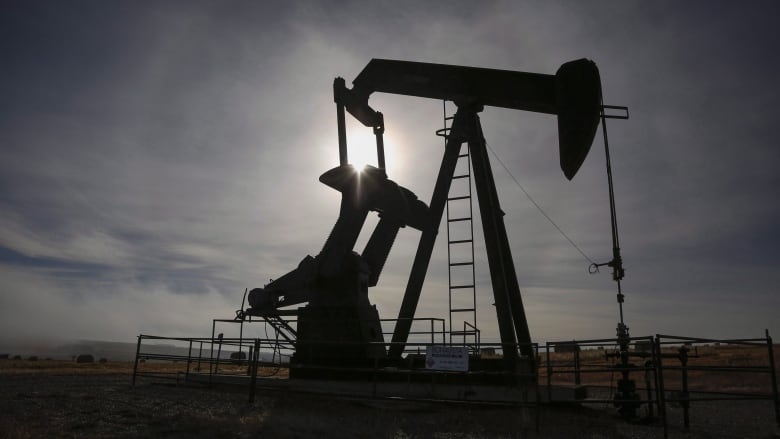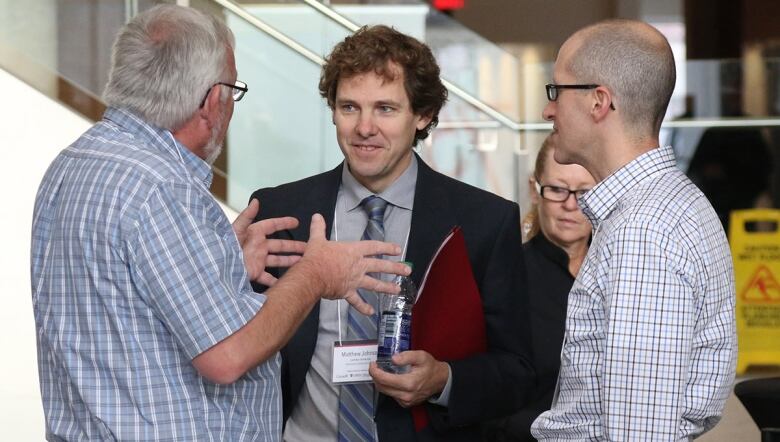Study finds federal regulations for methane more effective than Alberta's, but both can improve
New research compares 2 plans as Alberta and Ottawa negotiate agreement on rules for oil and gas industry

A new study suggests that the federal government's proposed regulations to reduce methane emissions, a potent greenhouse gas emitted by the oil and gas industry, would be more effective than competing regulations proposed by the Alberta government.
But there's room for improvement for both, and a question mark over whether either set of regulations would meet Canada's methane reduction targets.
The goal is to reduce methane emissions from the oil and gas industry by 40-45 per cent from 2012 levels by 2025.The goal stems from a leaders summit in 2016, when Mexico, the U.S. and Canada agreed to these methane reductions. The goal has now been incorporated into Canada's official climate plan, the Pan-Canadian Framework.
"Absolutely that kind of methane reduction is achievable," said Matthew Johnson, an engineering professor at Carleton University who is a leading expert on emissions in Canada's energy sector.
"We would say that the federal government [proposal] will just meet that target. Are there things in here you could do to improve both regulations? Hundred per cent. Neither regulation is perfect."

Alberta and the federal government are currently in equivalencynegotiations to decide which methane regulations will go into effect. Under the law, Alberta's regulations would apply if they are found to be as or more effective than the federal regulations. The negotiations are meant to determine if the provincial regulations are equivalent to the federal ones.
Both have proposed regulationsaimed at reducing leaks of methane from conventional oil and gas facilities, through a swath of new requirements that target everything from how the facilities are run, how often they are inspected, the equipment they use and how methane leaks are detected.
There are leaks of methane throughout the extraction of oil and gas, from the wellheads, through pipelines and pumps to delivery to market.
Johnson's analysis found that the federal government's regulations would achieve net reductions of40 per centjust reaching the lower end of the goal while Alberta's regulations would be behind at 35 per cent reduction.
Methane gas is 25 times more potent than carbon dioxide as a greenhouse gas, and accounts for 15 per cent of Canada's total greenhouse gas emissions, according to Environment and Climate Change Canada (ECCC). Reducingit is a key part of Canada's climate change plan, and a major policydirected toward reducing emissions from the oil and gas sector.
But the methane regulationsdon't apply to a significant part of that industry Alberta'soilsandsmines. The oilsands are a completely different mining operation than upstream oil and gas facilities, and account for about 19 per cent of Alberta's methane emissions. The current regulations are focused on the other sources of emissions, for which a clearer path to reduction exists.
Johnson's study pointed out that even without any new regulations, methane emissions from sources that are not oilsands mines have fallen from 2012 to 2018.
In contrast, emissions from oilsands mines have gone up. If emissions from the oilsands keep rising,it could cancel out any reductions from the new methane regulations.
"So which trend wins? If that oilsands trend increases faster than any additional non-regulation reductions at the top, then those targets are in jeopardy," Johnson said.
The Alberta Energy Regulator and the federal ECCC, the departments that crafted the methane regulations, did not comment directly on Johnson's paper. ECCC said the process of working toward an equivalency agreement requires comparing the "environmental outcomes" between the federal and provincial proposals.
"ECCC is always open to working with interested jurisdictions, including Alberta,toward equivalency agreements," said an ECCC spokesperson in an emailed statement.
Johnson's paper suggests several options for Alberta's regulations to be tweaked to reach, or even exceed, the methane reduction targets. He said he hopes that the analysis in his paper can be used to improve the regulations in the next few years.
"Methane is not a solved problem. Not even close. And these regulations aren't final, and I think that the regulators will tell you they're not final," Johnson said.
"To my understanding, there's an intent for both the federal government and the provincial government to revisit these regulations, and look for opportunities to improve or adjust as things change in the near term."












_(720p).jpg)


 OFFICIAL HD MUSIC VIDEO.jpg)
.jpg)



























































































